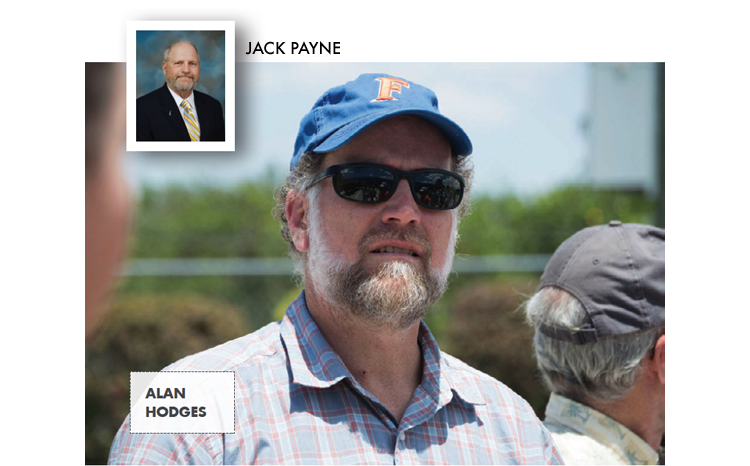Embarking on a study to analyze the economic impact of agribusiness in the area
IN 1974, a Hillsborough County government report predicted the demise of local agriculture by the turn of the century. It couldn’t have been more wrong. Hillsborough agriculture actually grew in value from $40 million annually at the time of the report to $400 million at the point of its predicted demise. We don’t know precisely how big it is now, but we’re about to find out.
The University of Florida Institute of Food and Agricultural Sciences, Food and Resource Economics Department is embarking upon a study to analyze the economic impact of agribusiness in Hillsborough County. It’ll include the number of jobs, value of crops, and livestock products, foreign and domestic exports, income, and taxes generated, both directly and indirectly. It will also include trends over time, so county business leaders and policy makers can see where they’ve been and use that to see where they’re going.
This is the first such economic report that IFAS has done on Hillsborough County. A previous study done in the 1990s by an economist not affiliated with UF was instrumental in bringing recognition to the local agricultural sector and was cited by local policy makers at the time for establishment of the Agricultural Reserve area.
It’s part of a renewed attention to Hillsborough County from UF/ IFAS. Our strong relationship with the county commission resulted in Hillsborough becoming a priority for experts, such as Alan Hodges in the UF/IFAS Food and Resource Economics Department. We’re going beyond numbers too. We know the story of Hillsborough County agriculture can’t be fully told in Gainesville — or anywhere other than Hillsborough. That’s why I was so pleased that Spiro Stefanou, our new chair of Food and Resource Economics, took 36 mostly Gainesville-based faculty on a field trip to Hillsborough County in May.
II call it Spiro’s hairnet-and-hard-hats tour. From a repacking plant, where hair coverings were required, to the helmets handed out at one of North America’s largest desalination plants, our people spent a day taking a look at Hillsborough-style agribusiness and natural resource issues. As the tour bus rolled past a cattle ranch and a hog wholesaler in Baum, Gulf Coast Research and Education Center economist Zhengfei Guan was frank. It’s much farther from Gainesville to Baum than it is from Baum to Gainesville, he said. In other words, if we don’t get out of the office, we run the risk of developing an overly Gainesville-centric view of the world while our employees and stakeholders out in the state feel overlooked. And in the case of economists, you can’t measure what you can’t see. So we had to see. Hillsborough gave them an eyeful.
What emerged from the trip was a narrative of resiliency. Hillsborough agriculture is what it is today because it continually adapts and defies predictions of its demise. The group toured the DiMare repacking plant in Riverview. When DiMare needed to move from its former site in the Tampa wholesale produce market, the company found it made economic sense to stay in the Hillsborough area, just a bit more inland where land is more affordable. That’s consistent with the overall trend of agriculture moving inland as coastal areas become more urbanized and land prices rise.
The tour then moved to the 10-year-old Gulf Coast REC in Wimauma. In the 1990s, IFAS had moved to close down its previous research center in Bradenton and pull out of the Tampa area. But as Hillsborough County Extension Director Stephen Gran informed the group, growers on the center’s advisory board successfully reversed the decision and persuaded IFAS to build the current facility, and provided significant local funding for the project.
Then the tour group walked outside to a dusty experimental field where Tasti-Lee tomato creator Jay Scott explained how he’s trying to invent a transgenic tomato that’s pesticide-resistant and tastes good. The tour concluded with an inside look at Tampa Bay Water’s desalination plant. Again, the plant’s very existence demonstrated Hillsborough County’s resiliency. Although the plant wasn’t built specifically for agriculture, the area faced a water crisis due to major reductions in groundwater pumping. Tampa Bay Water responded with a drought-proof source for its supply mix, which makes it a little less likely that Hillsborough agriculture will face a California-style catastrophe.
UF/IFAS will help write the next chapter of Hillsborough County agriculture in both numbers and words. Look for it later this year.
CREDIT
article by JACK PAYNE
ABOUT THE AUTHOR: Jack Payne is the University of Florida’s senior vice president for agriculture and natural resources and leader of the Institute of Food and Agricultural Sciences.

